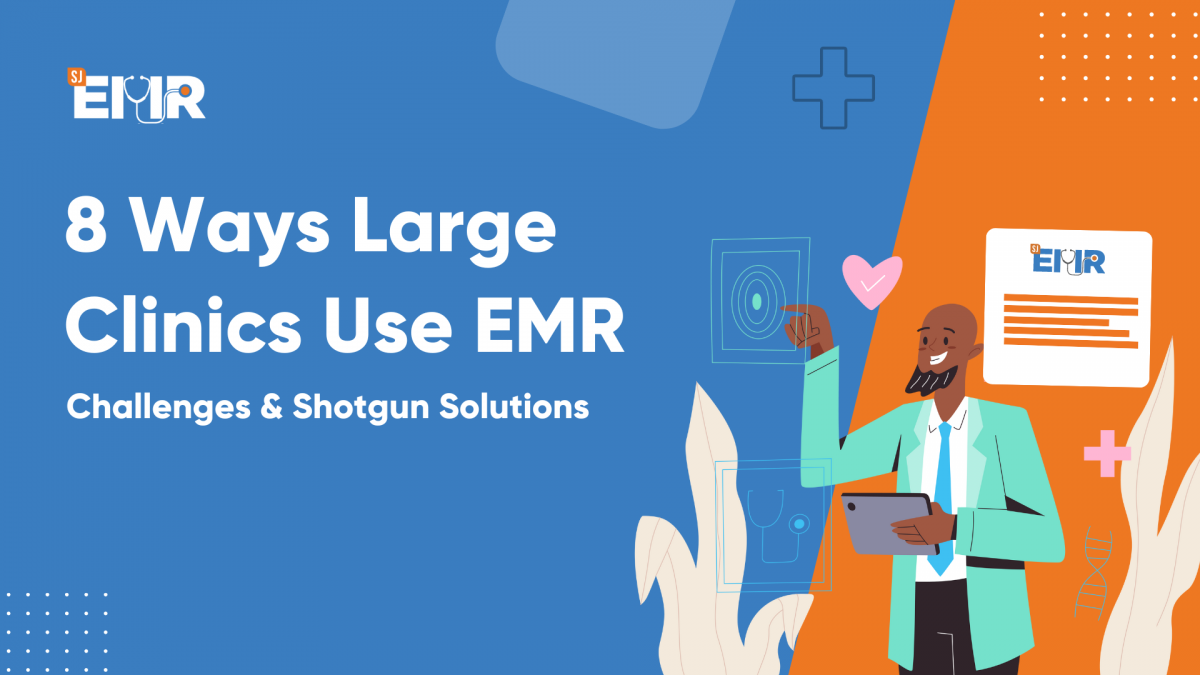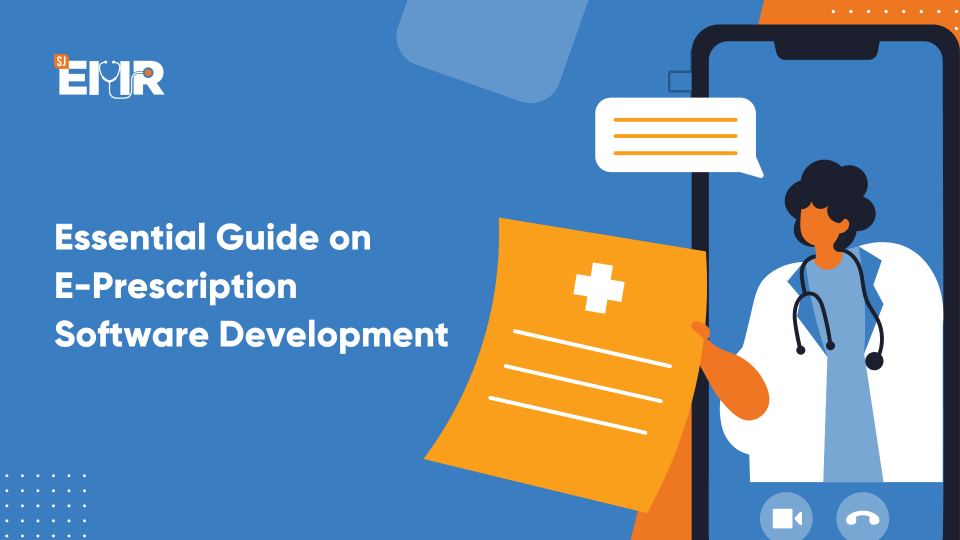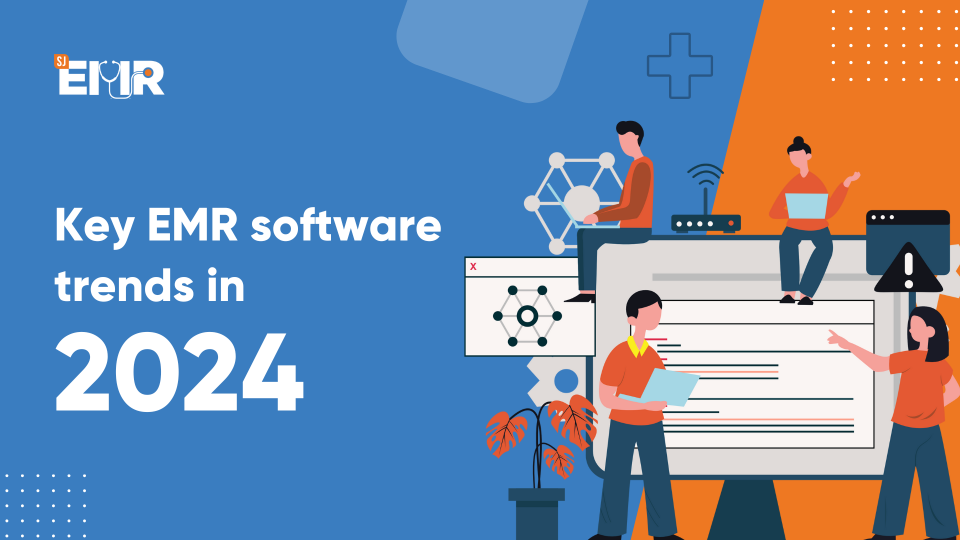8 Ways Large Clinics Use EMR: Challenges & Shotgun Solutions

Physician Burnout? Strategies to Maximize EMR Training & Support
May 2, 2024
Key Elements for an Improved Patient Journey in Healthcare
May 2, 2024- BD EMR
- Clinic management systems
- Digital health records
- doctor bd
- EHR (Electronic Health Records) vs. EMR differences.
- EMR challenges
- EMR implementation in large clinics
- emr in bangladesh
- EMR interoperability
- EMR solutions for clinics
- EMR system challenges
- EMR usage
- Health information systems
- Healthcare information technology
- Healthcare IT solutions
- Large clinic electronic records
- Large clinic EMR
- Medical record software
- Patient data management
- Patient management system
- sj emr
Electronic medical records (EMRs) have become essential for healthcare providers, streamlining operations, improving patient care, and ensuring compliance with regulatory requirements. While the adoption of EMRs has been widespread across practices of all sizes, large clinics face unique challenges in implementing and utilizing these systems effectively. In this blog post, we’ll explore eight ways large clinics use EMRs and address the common challenges they face, along with practical solutions to overcome them.
1. Centralized Patient Records
One of the primary advantages of large clinic EMRs is the ability to maintain centralized patient records. With multiple locations and healthcare providers, ensuring seamless access to up-to-date patient information is crucial.
Challenge: However, EMR implementation in large clinics can face significant challenges, such as data migration and integration, especially when dealing with legacy systems and disparate data formats.
Solution: To address EMR challenges, large clinics should develop a comprehensive data migration strategy and work closely with EMR vendors or consultants to ensure a smooth transition. Implement robust data governance policies and procedures to maintain data integrity, which is a fundamental aspect of patient data management, and ensure consistent data entry practices across the organization.
2. Care Coordination and Collaboration
Large clinics often involve multidisciplinary teams of healthcare professionals collaborating to provide comprehensive care. EMR usage facilitates care coordination by enabling real-time sharing of patient information, test results, and treatment plans among authorized personnel.
Challenge: Resistance to change and adoption of new workflows can hinder effective collaboration and care coordination.
Solution: Invest in extensive training and change management initiatives to ensure staff buy-in. This is an essential component of healthcare information technology and enables proficiency using the EMR system. Foster a culture of open communication and collaboration, and celebrate successes along the way.
3. Clinical Decision Support
EMRs often integrate clinical decision support (CDS) tools, which provide healthcare providers with evidence-based guidelines, alerts, and prompts to improve diagnostic accuracy and treatment plans.
Challenge: Ensuring CDS tools are customized and configured to align with the clinic’s specific protocols and workflows.
Solution: Large clinics should work closely with medical record software vendors or in-house IT teams to customize and configure CDS tools to meet the clinic’s unique needs. Configurations should account for EMR interoperability with other systems to ensure comprehensive care.
4. Population Health Management
Large clinics often serve diverse patient populations with varying health needs. EMRs can support population health management initiatives by enabling data analytics and identifying high-risk patients or potential gaps in care.
Challenge: Aggregating and analyzing large volumes of patient data from multiple sources can be complex and resource-intensive.
Solution: Leverage advanced analytics and reporting capabilities within the EMR system or integrate with third-party population health management solutions. These solutions are often part of overarching healthcare IT solutions designed to improve care delivery.
5. Regulatory Compliance
Healthcare organizations must adhere to many regulations, such as HIPAA, meaningful use requirements, and quality reporting measures. EMRs can assist in maintaining compliance by providing features like audit trails, secure data storage, and automated reporting capabilities.
Challenge: Keeping up with constantly evolving regulatory requirements and ensuring the EMR system is properly configured to meet these standards.
Solution: Having a clinic management system that is compliant and a dedicated compliance team can make this process more manageable. This ties into the discussion on EHR vs. EMR differences, as each may have different requirements for compliance.
6. Revenue Cycle Management
EMRs can streamline revenue cycle management processes, including coding, billing, and claims management. Many systems offer integrated revenue cycle management tools or can be integrated with third-party solutions.
Challenge: Ensuring accurate coding and billing practices across a large organization with multiple providers and locations.
Solution: Here, EMR solutions for clinics can be invaluable, especially when supported with EMR optimization techniques and standardized protocols. Leverage the EMR system’s reporting capabilities to identify and address any coding or billing discrepancies promptly.
7. Interoperability and Integration
Large clinics often rely on multiple systems, such as laboratory information systems, radiology systems, and practice management software. Ensuring interoperability and seamless data exchange between these systems and the EMR is crucial for efficient operations.
Challenge: EMR system challenges include integrating disparate systems and ensuring data integrity during the exchange process.
Solution: EMR system troubleshooting for large clinics involves working closely with EMR vendors and IT teams to establish secure and reliable integration protocols. Implement data governance policies and procedures to maintain data quality and consistency across integrated systems.
8. Scalability and Flexibility
As large clinics grow and expand their operations, their EMR system must be scalable and flexible enough to accommodate additional locations, providers, and new functionalities.
Challenge: Ensuring the EMR system can adapt to the clinic’s evolving needs without disrupting current operations or compromising data integrity.
Solution: An advanced EMR software for big healthcare facilities should have a proven track record of scalability and flexibile features that can accommodate expansion. Work with vendors to develop a long-term roadmap for system upgrades and expansions, and plan for adequate resources and personnel to support these changes.
While the adoption of EMRs in large clinics presents unique challenges, the potential benefits and long-term impact on patient care, operational efficiency, and organizational success make it a worthwhile investment. By addressing these challenges head-on and implementing practical solutions, large clinics can leverage the power of EMR technology to drive continuous improvement and provide high-quality, patient-centered care.
Remember, implementing an EMR system is not a one-time event but an ongoing journey. Continuous evaluation, optimization, and adaptation are essential to ensure the system remains aligned with the clinic’s evolving needs and contributes to the overall success of the organization.




